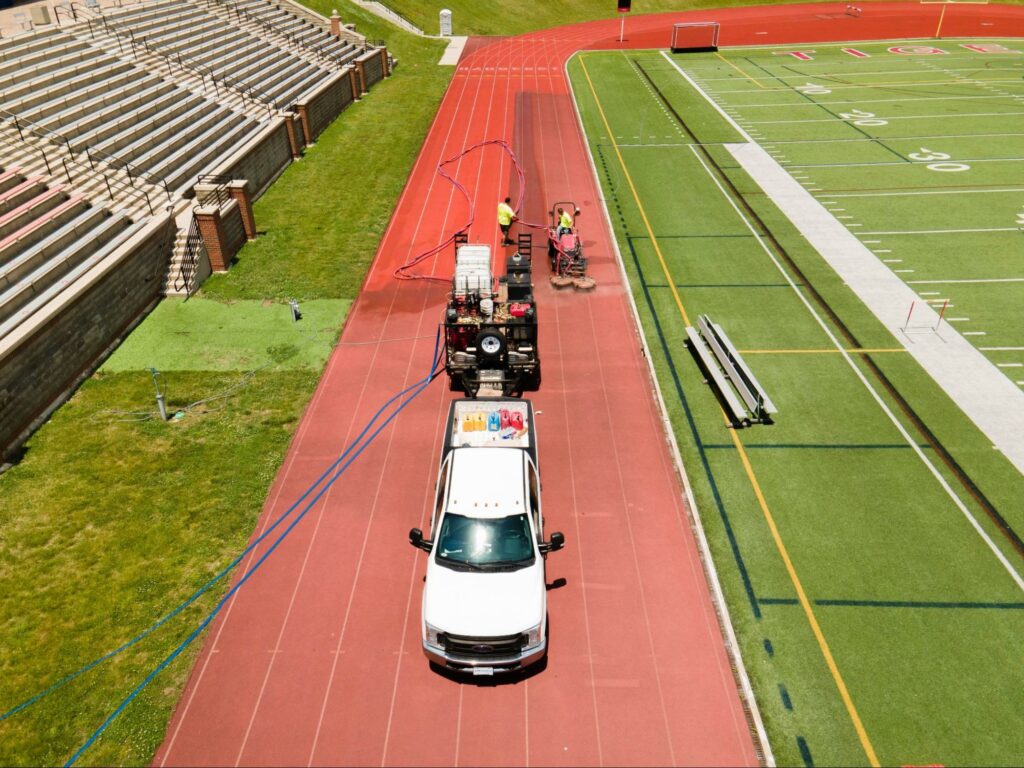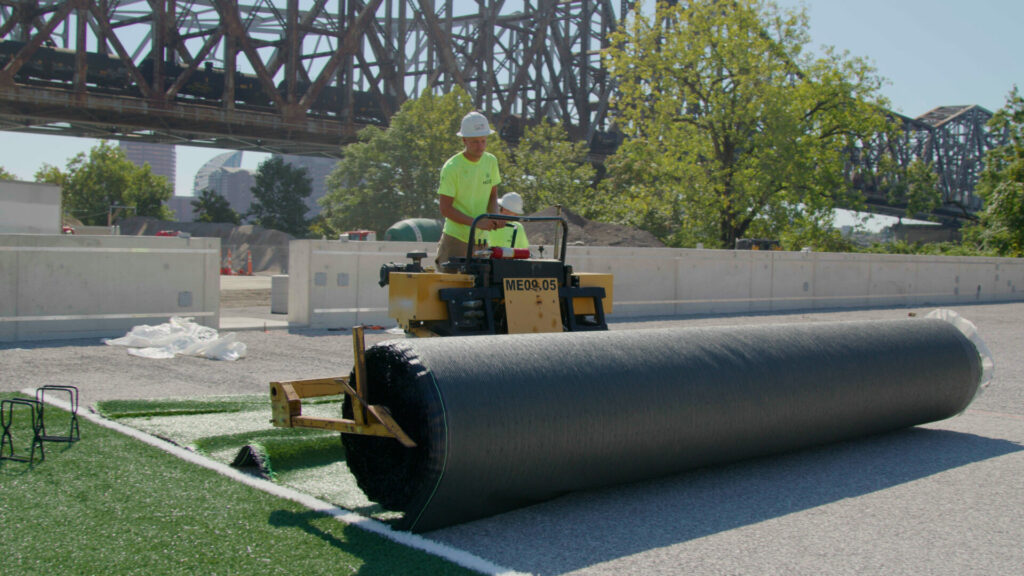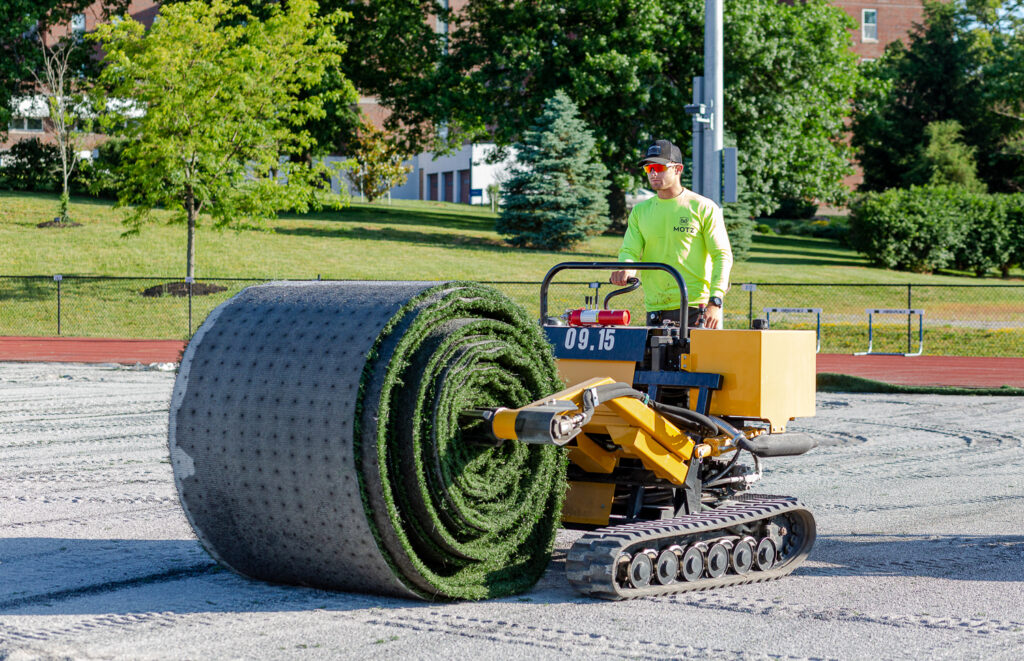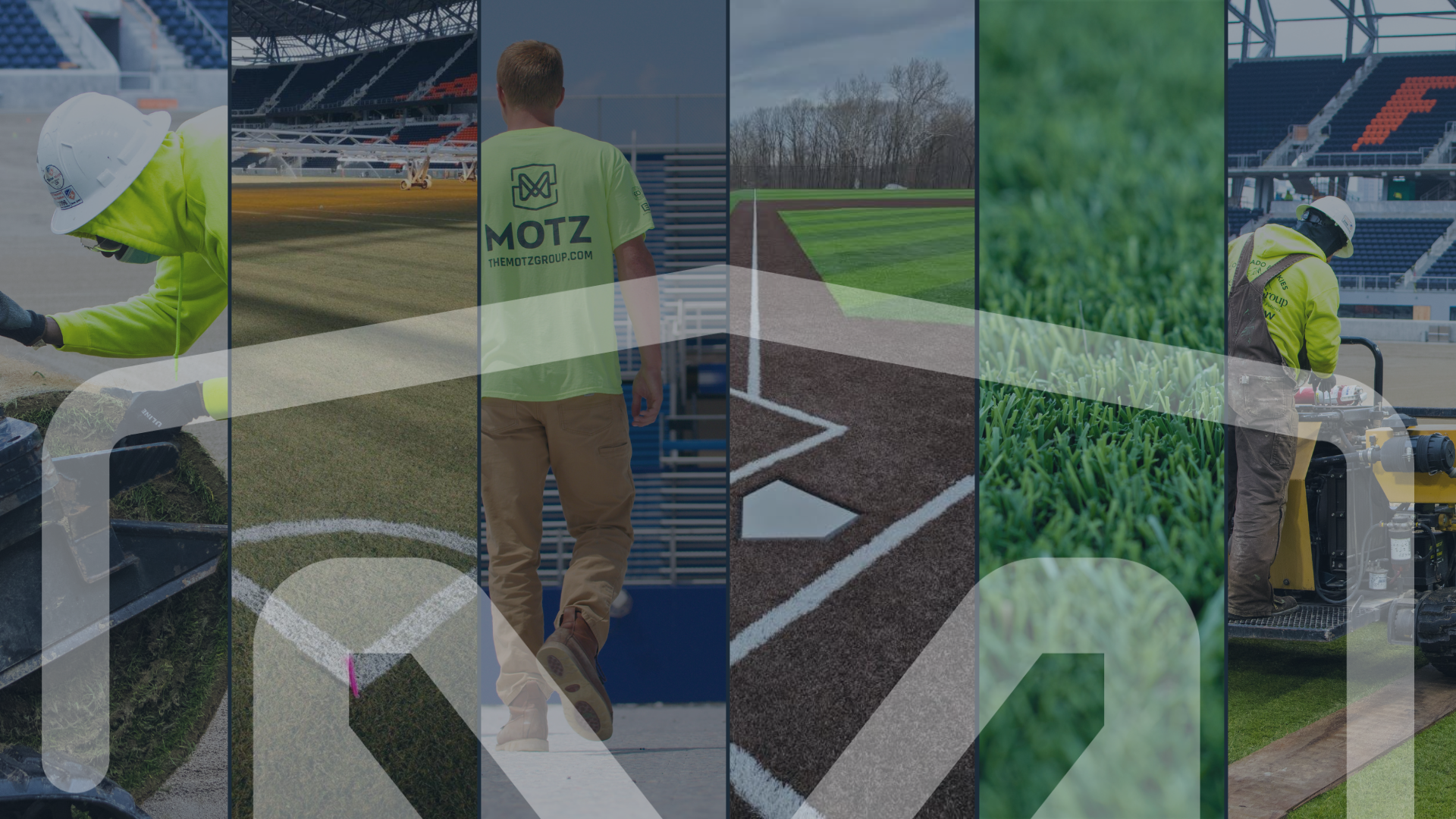
Sports Field Blog
Subscribe To Email Updates
Subscribe to our weekly newsletter and we’ll send updates straight to your inbox
What Are The Different Types of Synthetic Turf For Athletic Fields?
When you’re cheering on your favorite team, whether it be on the football field, baseball field, or soccer field, you’ll see a pristine, bright field surface at the center of all the action.
Synthetic turf fields have become a popular choice for athletic fields across the country thanks to their proven track record of durability, low-maintenance requirements, and high-performance capabilities. Additionally, they’re a cost-effective solution to the overuse and high maintenance costs that come with managing a natural grass field.
When you peel back the glamor of a beautiful artificial turf field, you might be wondering what makes up this pristine surface. Understanding the makeup of artificial turf fields can be complex, so let’s take a step back and cover what is in a synthetic turf system first.
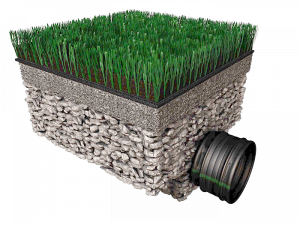
There are four main components: the base, an optional but highly recommended shock pad, the infill, and the turf carpet. However, in this blog, we’re focusing on the artificial turf carpet and the different types available so you know what to choose when it comes to your synthetic sports turf.
The 3 Types of Artificial Turf for Sports Fields
To fully understand the different types of artificial turf, we have to start with the individual turf blades themselves — the fibers.
Primarily made from polyethylene, these fibers are stitched into the turf carpet creating that iconic grass-like look. The characteristics of an ideal artificial turf fiber should include low skin friction, superior durability, high resilience, and temperature stability. So, let’s take a look at the different types of synthetic field turf fibers.
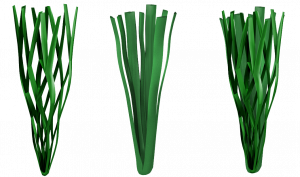
- Slit-Film Turf Fibers
These wider fibers are formed to create a net or “honeycomb” which is designed to cover and encapsulate the infill, while absorbing heavy impacts from kicks, drags, tackles and slides. This type of artificial turf is designed to be tough and deliver optimal agility for athletic performance.
- Monofilament Turf Fibers
This turf fiber is arguably the most grass-like out of the three as the blades are designed to stand up straight and tall just as natural grass blades do. Synthetic turf systems that use monofilament fibers are visually appealing and mimic the playing surface of natural grass (like ball-roll and ball-bounce), making it a popular choice.
- Dual Fiber
By combining monofilament fibers with a slit-film fiber, these hybrid synthetic turf systems are designed to provide fiber resilience against heavy usage. Thanks to the variety of fibers utilized, these systems deliver a full, lush look to any artificial turf field.
The type of turf you pick depends upon many things, but mostly your sport and ideal field performance. Motz has customized proprietary turf systems with all three turf fiber options.
Motz’s Innovative Synthetic Turf Systems Will Take Your Field to the Next Level
Now that you know a bit more about the different types of artificial turf, we’re going to walk you through the four types of synthetic turf systems we offer here at Motz for competitive play. Our customized, proprietary synthetic turf systems feature the most advanced products on the market and adhere to the highest standards for quality, safety, and durability.
Let’s dive in.
Slit-Film Turf Fibers for Multipurpose Synthetic Turf Fields
Twenty-Four/Seven is ideal for multi-use or all-purpose artificial turf sports fields. It’s a slit-film fiber and is crosshatched to minimize infill fly-out reduction, keeping your turf field looking its best and performing at the top of its game.
Slit-film is a true workhorse, prepared to sustain significant activity with great durability, making it ideal for a multi-purpose field for sports such as football, lacrosse, soccer, and field hockey.
The most common application of Twenty-Four/Seven is within artificial turf football fields. Fields with any inconsistencies in stability, density, or evenness can put football players at risk, so with our twenty-four/seven synthetic turf system, you can feel at ease knowing your players are protected.
For a field hockey/lacrosse application, a slit film fiber is preferred for a dependable and accurate ball speed. As the field gets broken in, slit-film fibers will crosshatch and create a C-cup shape, creating a surface that supports optimal performance. It also has the benefit of encapsulating the infill, which reduces maintenance hours and costs.
Monofilament Turf Fibers for a Synthetic Turf Soccer Field
PerformanceBlade, known for mimicking the appearance of natural grass, is a monofilament fiber system recommended and preferred for soccer specific synthetic turf fields or lighter-use facilities. A key reason monofilament turf fibers are preferred for soccer fields is the performance of the turf blades. monofilament fibers tend to stand vertically longer, which in turn, translates to a slower ball roll and more natural ball-to-surface interaction.
PerformanceBlade systems perform similarly to how a ball interacts on a natural, high-performance bluegrass or ryegrass field. However, a potential drawback to not having a cross-hatched fiber, like the Twenty-four/seven option, is that you may experience more infill flyout.
While monofilament fibers are preferred for soccer fields, they can also be used in synthetic turf football or lacrosse fields when a natural grass aesthetic is preferred.
Dual-Fiber for Lacrosse and Field Hockey Turf or Multipurpose Synthetic Turf Fields
CrossFlex is commonly used in multipurpose athletic fields with sports such as lacrosse, field hockey, football, and soccer. CrossFlex is a dual-fiber turf, meaning it is a mix of both slit-film and monofilament to provide a unique fiber blend and performance characteristics of both systems.
Dual-fiber turf is built with a strong backing and tight fibers to create the perfect surface with long-lasting durability and optimal performance.
You might be asking yourself, when or why should I choose a CrossFlex field over Twenty-Four/Seven? The answer is based on what field sport you are prioritizing. If lacrosse and field hockey are most commonly played, CrossFlex will provide your synthetic turf athletic field with the desired performance and aesthetic.
Artificial Turf for Baseball and Softball Fields
TriplePlay is a synthetic turf system designed specifically for artificial turf baseball and softball fields. We work with you to customize the field based on your performance needs. Tailored to hit a homerun, TriplePlay provides stability, speed, and exceptional playability, reducing maintenance hours and protecting your team from having rained-out games.
Which of the 3 Types of Artificial Turf is Best for You?
As you can see, there is truly no one type of field that fits all sports, so the type of turf, infill, and pad needed for your field will be a combination unique to your goals. To learn more about what option will best fit your needs, contact us.
Similar Blogs
